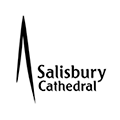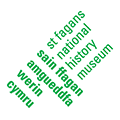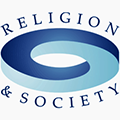This website enables you to explore questions about late medieval religious buildings and the rituals and worship that took place in them.
• What was it like to worship in a late medieval cathedral and parish church?
• If we enact medieval worship now, what can we find out about the total experience of those taking part – as ministers, as singers, as congregation – and about the buildings, artefacts, texts, and rituals that are used?
• And how does this kind of investigation help us better to understand the people and religious culture of the late Middle Ages?
These have been key questions in the ongoing research project, The Experience of Worship in late medieval Cathedral and Parish Church.
The website has two main objectives:
• To enable you to find out about the research project and its outcomes.
• To enable you to access the resources generated by the project – especially videos, still images, ‘performance’ texts, reports and participant responses.
The website is easy to navigate, but you can explore the structure here.
The Experience of Worship in late medieval Cathedral and Parish Church is an ongoing research project.
The initial phase of the project: 2009-13
The project was initiated in the College of Arts and Humanities, Bangor University, Wales. From its inception in 2009 until 2013 it was part of the UK-wide research programme Religion & Society, within which the project was awarded a major research grant. The Experience of Worship was subsequently chosen by the AHRC for one of its representative Case Studies.
Religion & Society has been jointly funded by the Arts & Humanities Research Council and the Economic & Social Research Council.
The Research Team
Since 2009-13 the project has been led by Professor John Harper (Bangor University) with Dr Sally Harper (Bangor University).
The other core members of the research team have been Dr Paul Barnwell (Oxford University) and Professor Magnus Williamson (Newcastle University), together with Judith Aveling (research student, Bangor University) and Dr Keith Beasley (project administrator, Bangor University).
Additional researchers engaged to assist with scholarly aspects of the project include Dr Leofranc Holford-Strevens (Oxford), Dr Henry Howard (Penrith), Christopher Hodkinson (Nottingham), Dr Tamsin Rowe (Worcester Cathedral) and Dr Matthew Cheung Salisbury (University College, Oxford).
The celebrant for the liturgical enactments in Salisbury Cathedral and St Teilo’s Church, as well as at Bronxville NY and Washington CT was the Revd Canon Jeremy Davies, Precentor of Salisbury Cathedral until 2012.
The Interdisciplinary Research Group
The following have supported and advised the project by attending a consultation on method and research priorities (2010) and/or observed at one or both periods enactments at St Teilo’s Church (2011): Dr Caroline Bithell (University of Manchester), Dr Roger Bowers (Cambridge University), Dr William Flynn (Leeds University), Dr Jane Flynn (Leeds), Revd Canon Christopher Irvine (Canterbury Cathedral), Dr Rob Lutton (Nottingham University), Dr Katharine Olson (Bangor University), Professor Nils Holger Petersen (University of Copenhagen), Professor Thérèse Smith (University College, Dublin), Karen Whiteside (Creative Workplace, Cilycwm), Dr Beth Williamson (Bristol University), Professor Linda Woodhead (Lancaster University).
Dr William Flynn and Dr Jane Flynn also participated in the enactments at St Teilo’s Church, as did Professor Madeleine Gray (University of South Wales).
Partners


The project has worked with two principal partners, especially for the enactments:
Salisbury Cathedral and St Fagans National History Museum, near Cardiff, where St Teilo’s church was used as location for the enactments.
It has also benefited from collaboration with American Sarum conferences (held at Christ Church, Bronxville, New York, in 2011, and at St John’s Church, Washington, Connecticut, in 2013), Bangor Cathedral (2009 onwards), St Davids Cathedral (2012-13).
Artists and craftspeople
The following have contributed to the making and decoration of artefacts and vestments for the enactments at St Teilo’s Church: Louise Edmunds (Llantwit Fardre – hangings), Jeremy Glenn (Abergavenny – stools, benches, Pax-board frame and pyxes), Goetze & Gwynn Ltd (Worksop – organ and lectern), John Hudson (Mirfield – pottery cruets, lavabo and lamp), Fleur Kelly (Mells – decorative design and artwork of organ), Norman Lawrence (Cwmbran – woodturning of pyxes), Alison Merry (Bisley, Glos – Pax-board image), Phil Neal (Worksop – incense boat, memorial brass and Asperges pail), Lois Raine (Exeter – painting of organ, Pax-board frame, and Five Wounds panel), Ross Smith (Pontypool – metalwork of Pax-board and pyxes), Mary White (Salisbury – vestments), York Glaziers Trust (Pax-board glass), as well as Mary Collings Ltd (Ipswich – pyx cloth and linen) and the workshops at St Fagans Museum.
All the video recordings were directed and edited by Andy Brice (Creative Workplace, Cilycwm).
The 1528 Sarum Gradual in the library of Christ Church, Oxford, was photographed by the Digital Image Archive of Medieval Music, by kind permission of the college’s governing body.
Sarum Customary Online
Sarum Customary Online is a separate initiative within The Experience of Worship research project. This online resource offers the Latin texts and English translations of four manuscript versions of the Customary of the Use of Salisbury, all four emanating from or associated with Salisbury Cathedral. In addition, the website includes the familiar conflated texts, edited by W. H. Frere in The Use of Sarum, i (Cambridge, 1899), together with new English translations. These resources are provided with a substantial commentary and introduction on the website.
Late Medieval Liturgies Enacted
Late Medieval Liturgies Enacted: The Experience of Worship in Late Medieval Cathedral and Parish Church, ed. Sally Harper, P. S. Barnwell and Magnus Williamson, (Ashgate / Routledge, 2016) is a direct outcome of the research project, with contributions by the main project researchers. In addition to sections addressing medieval liturgy and modern enactment, past evidence and present realisation, and present experience of past rituals, it includes a selection of colour plates and plans.
The ongoing project
The principal objective of the research team in the period 2013-17 is dissemination of the outputs and outcomes of the first phase of the project, of which this website is one element.
In addition to this website, Sarum Customary Online and Late Medieval Liturgies Enacted, two further printed volumes are in preparation:
- Lady Mass according to the Use of Salisbury: The Votive Cycles of the Daily Mass as celebrated in the Lady Chapel in honour of the Blessed Virgin Mary , ed. Sally Harper, John Harper and Matthew Cheung Salisbury (British Academy, Early English Church Music, 2017)
- John Harper, Old Sarum and its Customary: liturgical practice in the first cathedral at Salisbury (Boydell, 2018)
Ongoing investigation through enactment in the contexts of medieval, early modern and contemporary liturgies continues, most recently with enactments of services from the 1549, 1552 and 1604 versions of The Book of Common Prayer. We also hope to collaborate with a new group of significant medieval churches in planning further enactments. Research is also proceeding into aspects of the ritual use of the organ and of medieval and early modern performance practices in relation to both organ and voices (singly and in combination).
Publications
The lists below include publications by members of the Research Team relevant to the project, or by others about the project. Those which directly discuss the project (including artefacts) are marked with an asterisk (*).
P. S. Barnwell, ‘Seating in the nave of the Pre-Reformation parish church’, in T. Cooper and S. Brown (eds.), Pews, benches and chairs: church seating in English parish churches from the fourteenth century to the present (London: Ecclesiological Society, 2011), 69-86.
*Keith Beasley, ‘“The Experience of Worship”: research, engagement and transcendence’, De Numine (Journal of the Alister Hardy Society), 51 (2011), 20-23.
*Introduction to Processions and other late mediaeval Ceremonies of Salisbury Cathedral: a facsimile of Salisbury Cathedral MS 148, transcribed by Alastair Lack, 2013, [vi]-[xi] (first [provisional] edition, private publication by Alastair Lack, no ISBN)
*John Harper, ‘Liturgy, music and theology in the English choral tradition’, in Oliver D. Crisp, Gavin D’Costa, Mervyn Davies and Peter Hampson (eds.), Christianity and the Disciplines: The Transformation of the University, Religion and the University series, vol. 2 (Edinburgh: T&T Clark, 2012), 263-278.
John Harper, ‘Sonic ceremonial: choral and organ polyphony in late medieval Britain’, Journal of the British Institute of Organ Studies, 35 (2011), 6-19.
*John Harper, ‘An organ for St Teilo: a Welsh instrument in the pre-Reformation tradition’, Journal of the British Institute of Organ Studies, 35 (2011), 134-153.
John Harper, ‘Continuity, discontinuity, fragments and connections: the organ in church, c. 1500–1640’, in Emma Hornby and David Maw (eds.), Essays on the History of English Music, (Woodbridge: Boydell Press, 2010), 215‐231.
*Ann Wollenberg, ‘The experience of worship‘ (AHRC online feature article on the project, 2 January, 2013).
Forthcoming publications (See also those publications listed under The ongoing project, above)
P. S. Barnwell, Church Buildings, Liturgy and Devotion in the Middle Ages: Evidence from Northamptonshire (Swindon: English Heritage, forthcoming).
*John Harper, ‘Investigating medieval ritual through liturgical enactment’, in Linda Woodhead (ed.), How to Research Religion: Putting Methods into Practice (Oxford: OUP, forthcoming).
PhD thesis (available online)
Judith Aveling, ‘In nomine Iesu omne genu flectatur: The Late Medieval Mass and Office of the Holy Name of Jesus; Sources, Development and Practice’ (Bangor University, 2015).

